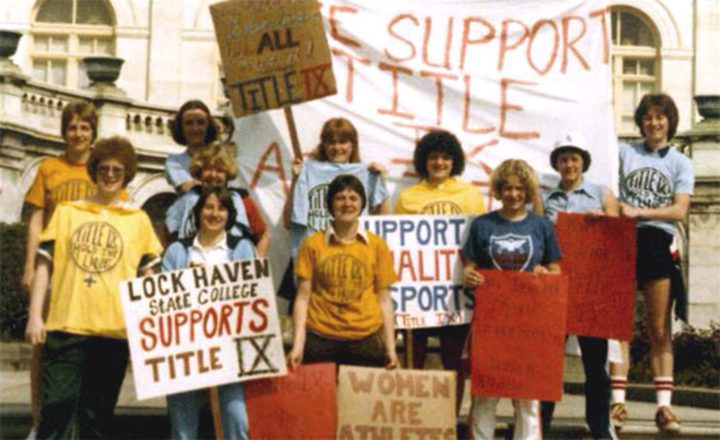June 23rd, 2012, marks the 40th anniversary of the passing of the civil rights law, Title IX. Title IX states, “no person in the United States shall, on the basis of sex, be excluded from participation in, be denied the benefits of, or be subjected to discrimination under any education program or activity.” Title IX has helped pave the way towards more equal opportunities in educational institutions for young girls and women since the 1970s, but it has most notably been credited for equalizing the playing field between girls and boys in sports. Despite the significant growth of women’s sports over the past couple decades, many young women and girls don’t realize how much they have benefited from Title IX.
Title IX was met with a great deal of resistance and little enforcement in its early years. It wasn’t until 1990 that Congress improved its stance on the issue and began enforcing the law strictly. Continued support and encouragement for Title IX has helped create opportunities for female athletes to succeed from that point forward.
The 1990s and early 2000s were a time when women’s success in athletics could be found almost everywhere. “The Fab Five” of the US Women’s Soccer Team was invincible, Venus and Serena Williams were just beginning their dominance in tennis, the “Magnificent Seven” members of the US Women’s Gymnastics team beat out Russia and Romania to clinch the team gold medal at the 1996 Olympics, and Picabo Street became the first US skier (male or female) to win a World Cup season speed title.
Girls finally had female athletes to look up to who were not only successful in their sport, but receiving the recognition they deserved.
Title IX opened the door to gender equality in sports. Let’s celebrate its 40th anniversary with some history.
The success of high-level female athletes in the US began to legitimize girls’ participation in sports at all ages and levels. Further developed acceptance of—and expectation for—girls and women to compete in athletics has made clear just how important participation in sports for girls is in the long run. Sports are every bit as beneficial to girls development into young women as they are for boys growing into young men.
A longtime coach of both young athletes and Olympians, Jack Griffin, stated that “any girl or woman who is very much involved in athletics tends to have an extraordinary amount of desire, not only to excel in her sport but to excel as a person.”
The positive impact that Title IX has had for girls and women since its installment is clear when you take the time to look.
Here’s the issue: girls who were born in and after the nineties often don’t realize how lucky they are to live in a well-established Title IX era. Although it shocks me when I hear that some girls don’t even know what Title IX is, I must admit that I myself often forget about the benefits that it has provided me and other female athletes alike. Girls growing up today should be educated and made aware of the challenges faced by those before them. Building appreciation for how far women have come throughout history will help girls to appreciate that they themselves often don’t have to think about their gender mattering; in sports and so many other aspects of life.
Tomorrow, on the 40th anniversary of Title IX’s inception, I challenge all readers to think about any female athletes in their lives and the opportunities that they have found through playing sports. On this historic occasion I encourage not just young girls and women, but everyone to take a moment to appreciate how much has changed in the athletic community over the past 40 years. To realize how much the current generation of girls and women benefit from the advocates before us, and to envision how much more we have to look forward to in the next 40 years.

How useful was this post?
Click on a star to rate it!
Average rating 0 / 5. Vote count: 0
No votes so far! Be the first to rate this post.




